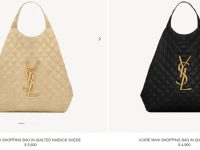Title: Why Selling Designer-Inspired Products on AliExpress Is No Longer Sustainable (And What to Do Instead)
In the early days of cross-border e-commerce, many sellers made significant profits listing designer-inspired products on platforms like AliExpress. However, over the years, platform policies have changed drastically. Today, the question many returning sellers ask is: “Can I still sell brand-inspired products on AliExpress? Are there still viable channels?”
A Glimpse into the Platform

Let’s try a quick search on AliExpress for keywords like “luxury watches.” You may still see listings that look strikingly similar to well-known models, such as the Submariner series. At a glance, it’s easy to spot their resemblance. These listings may even show new stores registered only recently.

But will these stores survive? Based on industry insights and frequent communication with past sellers, the answer is clear: even if a store begins to see traction, the listing or store may disappear soon after due to enforcement.
The Turning Point
Since 2016, AliExpress has implemented stricter intellectual property enforcement under its “enterprise + brand” strategy. By March of that year, the platform had fully eliminated listings that were in violation of IP rules. This marked the end of a once-lucrative period where selling replicas was low-risk and profitable.
Do Such Products Still Exist on AliExpress?
While you may still come across listings resembling designer goods, they are rare and short-lived. Platform policy is strict: once a violation is detected, the store is shut down and all funds are frozen for up to two years. This harsh penalty is enough to discourage even experienced sellers.

Current Methods Sellers Use (Not Recommended)
Despite the risks, some sellers continue trying to list brand-inspired goods by using discreet methods:
Avoiding Keywords: Avoid any direct or modified use of brand names.
No Logos: Remove logos from product images.
Encrypted Communication: Direct buyers to WhatsApp or WeChat for more information.
QR Codes: Use QR codes disguised as product images to redirect users to full product albums.
Short-Term Listings: Launch weekend-only stores targeting high-traffic affiliate channels, then close before detection.
Why Some Sellers Still Try
Built-in Traffic: AliExpress brings in millions of visitors, which makes listing popular-looking items naturally high-converting.
Simplified Payment Processing: Many sellers see AliExpress as a useful tool to process transactions, especially when other gateways like PayPal or Stripe ban brand-related sales.
The Hidden Risks
Store Termination: Every seller of such products eventually faces store shutdowns.
Frozen Funds: Two-year fund holds are common, and platform support offers little assistance.
High Operational Costs: Some sellers have lost over $300,000 across multiple accounts, with no compensation.
A Better Alternative: Independent Websites
The only sustainable path forward for sellers of brand-inspired products is through independent websites. This approach provides:
Greater control over branding and product presentation
Flexibility with payment solutions and shipping logistics
Long-term stability without depending on platform policies
Conclusion
While AliExpress was once a haven for high-margin sales of designer-style goods, the current landscape has changed. Selling such items on AliExpress is not only unsustainable but highly risky. For those looking to build a serious business in this space, building a compliant, secure, and conversion-optimized independent website is the only viable long-term solution.





